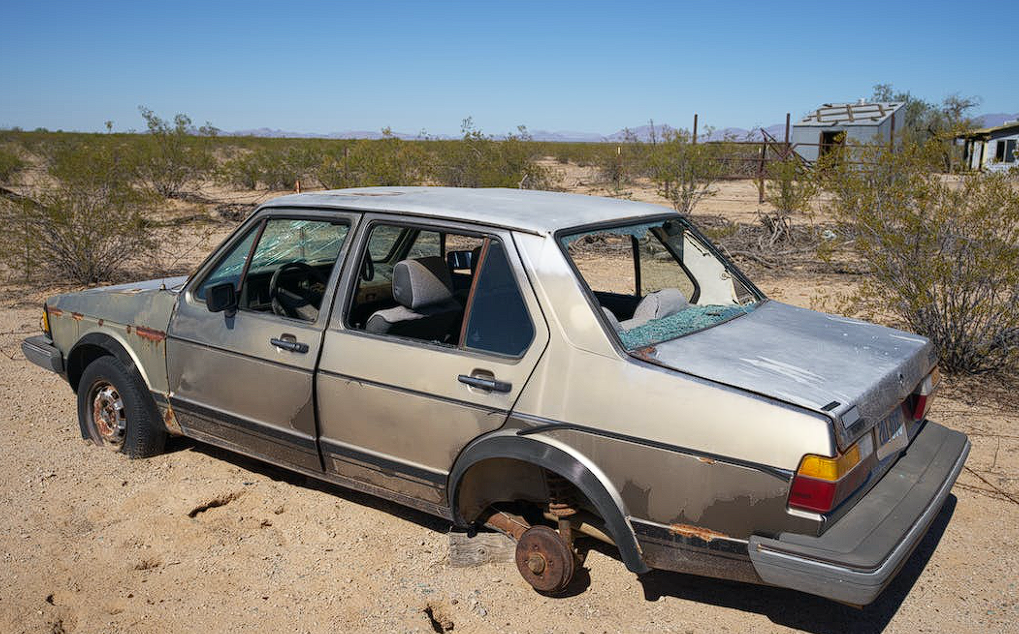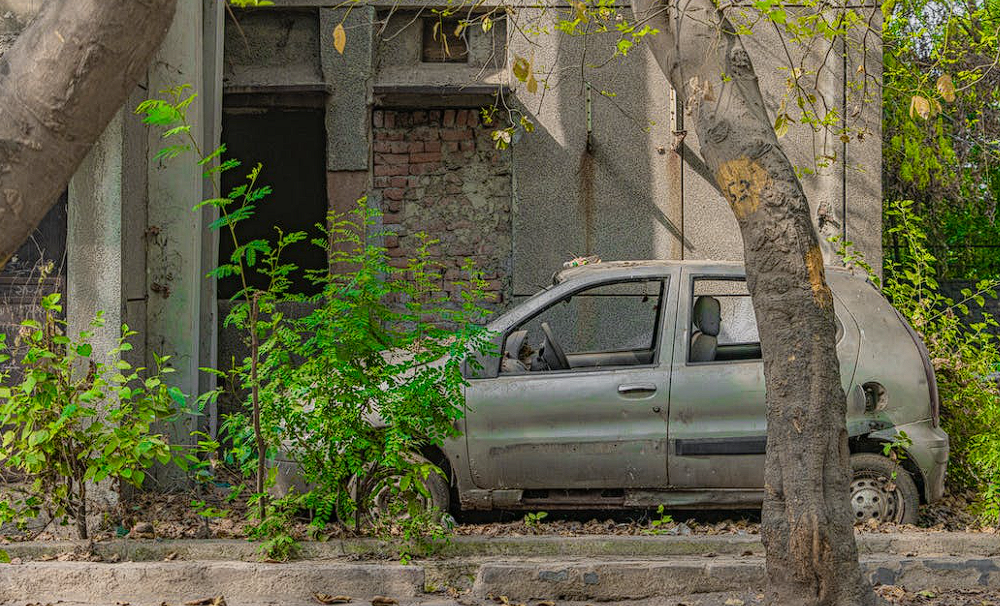Not all moves are created equal when it comes to relocating, especially when your garden is coming with you. Garden moves require a special touch and expertise beyond packing boxes and furniture. Whether transferring a few cherished plants or an entire outdoor oasis, choosing the right removalist service that specialises in relocations is crucial to ensuring that your green friends arrive at their new home safe and sound.
In this blog post, we'll explore what you should look for in a removalist service specialising in specialising moves. From understanding the unique challenges of transporting delicate plants and equipment to evaluating professional movers' capabilities and past performance, we'll provide you with the insights you need to make an informed decision. We'll delve into the essential services these specialists offer, the questions you should ask before hiring one, and the cost considerations to remember. So, whether you're a seasoned gardener or a budding green thumb, read on to find out how to ensure your garden's move is as seamless as the rest of your relocation.
What Is A Garden Moves?
A garden move is a unique relocation process that involves transporting living plants and associated garden elements from one location to another. This task can range from moving a few potted treasures to shifting an entire landscape, including various flora such as shrubs, trees, perennial beds, and water features like ponds. In addition to the plants, a garden move might include garden furniture, statues, large rocks, and specialised items such as irrigation systems and decorative elements.
The complexities of moving a garden are manifold and require careful planning and execution. One of the foremost challenges is ensuring the health and vitality of the plants throughout the move. Unlike most belongings, plants are living entities that can suffer stress and damage from environmental changes, handling, and temperature. Ensuring they arrive at their new home in a thriving condition demands specific horticultural knowledge and the right packing materials and techniques.
Handling large or delicate garden structures adds another layer of difficulty. Items like large sculptures, delicate ceramic pots, and bespoke garden benches must be handled carefully to prevent damage. Similarly, dismantling and transporting water features or heavy boulders requires specialised expertise to ensure they are moved safely and efficiently.
Overall, the process demands a removalist service that understands the logistical aspects of moving, possesses a green thumb, and appreciates the art and science of horticulture. Such expertise ensures that your garden's living and non-living elements are given the meticulous care they deserve during a move.
Key Qualities to Look for in a Garden Move Removalist
Choosing the right garden move removalist is crucial to ensuring the successful relocation of your garden. When considering which service to hire, it's essential to focus on three critical areas: their experience and expertise, the equipment they use, and their licensing and insurance coverage.
Experience and Expertise
First and foremost, the removalist team's experience is paramount. Specialists with a proven track record in garden moves will have a deep understanding of the specific needs and nuances of transporting plants and garden infrastructure. This knowledge is vital, as plants are particularly sensitive to stress and environmental changes. An experienced professional will know how to handle everything from delicate flowering plants to robust shrubs and trees, ensuring they remain healthy and intact throughout the move.
Proper Equipment
Another crucial factor is the equipment used by the removalist service. Specialised vehicles are necessary to transport your garden's components safely. This includes vehicles that can maintain stable temperatures, humidity-controlled containers for sensitive plants, and custom crating solutions for large, fragile items like statues or large potted trees. Using the correct equipment minimises damage during transit and helps secure a seamless transition from one garden to another.
Licenses and Insurance
Lastly, verifying that the garden move removalist you choose is fully licensed and insured is vital. Licensing assures you that the service meets the required standards and regulations for a removalist business. On the other hand, insurance provides a safety net against potential losses or damages during the move. Ensuring that your chosen removalist is adequately insured protects you financially and gives you peace of mind, knowing that you are
covered in the unlikely event of an accident.
When relocating a garden, selecting a removalist with expertise, proper equipment, and valid credentials is essential. This choice will significantly influence the move's success, helping your garden flourish in its new location.
Services Offered by Garden Move Removalist
Enlisting the expertise of a garden move removalist can make all the difference when relocating a garden. These professionals offer a suite of services to ensure every moving aspect is handled carefully, from initial consultation to the final placement of your plants in their new environment.
Pre-move Consultation
The process begins with a pre-move consultation, where removalists evaluate your garden in its current state. They consider factors such as the plants' types and sizes, the garden's layout, and any special requirements for delicate or large items. Based on this assessment, they provide tailored advice on the best practices for the move, ensuring each plant's specific needs are addressed. This stage is crucial for planning and preparing for a smooth relocation process.
Packing and Handling
Packing is one of the most critical stages of a garden move. Removalists use various techniques and materials specifically suited to the needs of different plants and garden accessories. For instance, sturdy crates might be used for large shrubs or statues, while delicate flowers may require soft packing materials to prevent damage. The goal is to secure each item appropriately, mitigating the risk of harm during the move.
Transportation
Maintaining the right environment is essential during transportation, especially for sensitive plants. Garden move removalists often use climate-controlled vehicles that can regulate temperature and humidity, mirroring the plants' natural conditions as closely as possible. This attention to detail ensures that the plants remain stress-free and healthy during transit, regardless of the outside weather conditions.
Unpacking and Replanting Services
Once at the destination, the service extends to unpacking and replanting. Specialists take great care to place each plant in a suitable location based on its sunlight, soil, and space preferences. They also offer guidance on post-move care to help plants adjust to their new environment. This comprehensive approach helps ensure that the plants survive the move and continue to thrive.
By offering these dedicated services, garden move removalists ensure that every phase of the garden relocation is managed with precision and care, allowing you to enjoy your garden in its new setting without undue stress or worry.
Evaluating Past Performance
When selecting a garden move removalist, one of the most reliable ways to anticipate the quality of service you can expect is to examine their past performance. This involves looking at customer reviews and testimonials, as well as detailed case studies or portfolios of their previous projects.
Customer Reviews and Testimonials
Customer reviews and testimonials play a pivotal role in understanding a garden move removalist's real-world effectiveness and reliability. These insights, drawn from previous clients, provide a firsthand account of their experiences with the service, highlighting strengths and potential improvement areas. Reviews often cover professionalism, effectiveness in handling delicate plants, punctuality, and overall satisfaction with the move. Reading through these testimonials helps you gauge whether the removalist consistently meets the expectations of their clients and how they handle any issues that may arise.
Questions to Ask Before Hiring
Before entrusting a removalist service with your garden, asking a series of targeted questions is crucial. These queries will help you determine whether the service provider is well-equipped and experienced enough to meet the specific demands of a garden move. Here are some essential questions to consider:
- How do you handle the transportation of delicate plants?
Understanding the methods and precautions taken while transporting fragile plants will give you an insight into how well your garden will be cared for. It's important to know if they use specialised or climate-controlled environments, especially for sensitive species.
- What is your success rate with past garden moves?
Asking about their track record will help gauge their effectiveness and reliability. A reputable service provider should be able to provide statistics or examples of successful garden relocations they have conducted.
- Can you provide a detailed quote and outline of the services included?
Getting a detailed quote will ensure that there are no hidden costs and that all required services are included. This is crucial for budgeting and comparing different services.
- What type of insurance coverage do you offer?
Insurance protects your valuable plants and garden elements during the move. Ensure they offer comprehensive coverage that protects against loss or damage.
- Do you have any specialised specialised vehicles for garden moves?
This question will help you understand if they are equipped with the necessary tools and vehicles tailored for garden moves, which is essential for safe and efficient transportation.
- How do you prepare and plan for a garden move?
A detailed explanation of their preparation and planning process will show their professionalism and thoroughness. They must conduct pre-move assessments and tailor their strategy to your garden's needs.
- Can you provide references or testimonials from previous clients?
References or testimonials can offer additional reassurance about the quality of their service and customer satisfaction.
- What steps do you take to ensure plants remain healthy post-move?
Understanding their post-move care recommendations will help ensure your garden's continued health and growth in its new location.
Asking these questions will help you find a removalist service competent in handling garden moves and one that matches your specific requirements and expectations. This careful selection process will contribute significantly to the successful relocation of your garden.
Cost Considerations
Understanding the factors that influence the cost of garden moves is crucial for budgeting accurately and ensuring you receive good value for the services provided. Garden moves can vary significantly in price based on several key elements.
Factors Influencing Cost
- Size and Scope of the Garden: Larger gardens or those with more plants and garden features will generally cost more to move due to the increased labour and resources required.
- Distance of the Move: The further the distance between the old and new locations, the higher the transportation costs. Long-distance moves may also require additional measures to ensure the plants' survival, potentially increasing costs.
- Special Requirements: Delicate or rare plants may need special packing materials or climate-controlled environments. Similarly, large or heavy garden structures like statues or large rocks require special moving equipment, adding to the overall cost.
- Accessibility: Difficulty accessing the garden for packing and loading can impact costs. Tight spaces, steep grades, or remote locations can complicate the move and require additional labour or equipment.
- Season: The time of year can affect the cost due to varying demand for moving services and the different care requirements of plants during various seasons.
Tips to Get the Best Value
- Obtain Multiple Quotes: Gather quotes from several garden move removalists to compare prices and service offerings. This will help you understand the market rate and identify the most cost-effective option.
- Check for Comprehensive Services: Ensure the quote includes all necessary services, such as pre-move assessments, specialised relocation, and post-move care. This comprehensive approach can prevent unexpected costs and ensure your garden's safety throughout the move.
- Plan Ahead: Booking services in advance can secure a better rate and allow more room to negotiate terms. Additionally, planning the move during off-peak seasons might reduce costs.
- Ask About Custom Packages: Some services offer custom packages that better suit your needs and budget. Tailoring services to precisely what you need can avoid paying for unnecessary extras.
- Review Insurance Coverage: Ensure that the insurance provided is comprehensive. It might seem like an additional cost, but it protects against significant potential losses, providing better value in the long run.
By considering these factors and following these tips, you can better manage the costs associated with moving your garden and ensure you receive the best possible value from your chosen services.
Conclusion
Choosing the right removalist service for your garden move is a crucial decision that can significantly impact the successful transition of your cherished garden to its new home. Each step in the selection process is vital, from understanding the specific services offered by removalists, including pre-move consultations and careful handling during transport, to evaluating their past performance through customer reviews and detailed case studies.
As you consider potential removalists, remember to ask the right questions that delve into their experience, equipment, and thoroughness of service. Furthermore, understanding the cost considerations and what factors affect the pricing will help you budget appropriately and ensure you are getting the best possible value for your investment.
Moving a garden is no small task—it's a delicate process that requires expertise and careful planning. By choosing a qualified garden move removalist, you can rest assured that your garden will survive the move and continue to thrive in its new environment. Take the time to make an informed decision, and look forward to enjoying your garden's beauty and tranquillity in its new setting.
Content Summary:
- Not all relocations are straightforward, especially when moving a garden, which requires specialised specialised beyond regular moving tasks.
- Whether it's a few cherished plants or an expansive outdoor garden, selecting the right removalist service specialisinspecialisingmoves is crucial.
- This blog explores essential considerations for choosing a removalist service for garden moves.
- We'll cover the unique challenges of transporting delicate plants and equipment and the capabilities and past performance of professional movers.
- The post will guide you through the services removalists offer, what questions to ask them, and cost considerations.
- A garden move involves transporting living plants and garden elements, such as furniture and decorative items, from one location to another.
- This can range from moving a few potted plants to relocating large items such as trees, perennial beds, and ponds.
- Moving a garden requires meticulous planning and execution to ensure the health and vitality of the plants.
- Plants are sensitive to environmental changes, and stress from relocation can affect their health.
- Specialised knowledge and appropriate packing materials are necessary to ensure plants thrive in their new location.
- Larger garden structures and delicate items like sculptures and ceramic pots also present significant challenges during a move.
- Specialised expertise is essential to safely moving heavy boulders and water features.
- A competent removalist must understand a garden move's logistical and horticultural aspects.
- Choosing the right garden move removalist is critical for the successful relocation of your garden.
- Important factors when selecting a service include its experience, the equipment it uses, and its licensing and insurance.
- Experienced professionals understand the nuances of transporting plants and garden infrastructure.
- They are skilled in handling everything from delicate flowering plants to robust shrubs and trees.
- The right equipment, such as climate-controlled vehicles and custom crating solutions, is essential for safe transport.
- Ensuring the removalist is fully licensed and insured protects against potential losses or damages.
- Comprehensive insurance gives peace of mind that you're covered in case of an accident.
- Garden move removalists offer services from the initial consultation to the final placement of plants in the new location.
- The pre-move consultation involves evaluating the garden and planning the best practices for the move.
- Packing and handling require using materials and techniques suited to the needs of different plants and garden accessories.
- Maintaining the right environmental conditions during transportation is crucial for plant health.
- Removalists often use climate-controlled vehicles to mirror natural conditions as closely as possible.
- After arriving at the destination, removalists assist with unpacking and replanting, ensuring each plant's needs are met.
- Post-move care is provided to help plants adjust and thrive in their new environment.
- Evaluating the past performance of garden move removalists involves looking at customer reviews and detailed case studies.
- Customer testimonials provide insights into the service's effectiveness and client satisfaction.
- Asking targeted questions can determine if the service can meet the specific demands of a garden move.
- Questions should cover how they handle delicate plants, their success rate, and the comprehensiveness of their services.
- Cost factors include the size and scope of the garden, the move distance, and any special requirements.
- Obtaining multiple quotes ensures you get the best value for the services provided.
- Planning the move during off-peak seasons and reviewing comprehensive insurance coverage can also help manage costs effectively.
- Choosing the right removalist ensures that your garden move is handled with care, allowing you to enjoy your garden in its new setting without stress.
FAQs About Garden Removalist
A garden move involves relocating living plants and garden-related elements from one place to another. These can include everything from small potted plants and shrubs to large trees, perennial beds, garden furniture, statues, and even complex water features like ponds.
Unlike standard household items, plants are living organisms that can suffer stress and damage due to environmental changes, handling, and transportation. Specialist removalists have the necessary expertise in horticulture and the appropriate equipment to ensure that your plants and garden structures are moved safely and arrive in a healthy condition at their new location.
When selecting a garden move specialist, focus on their experience and expertise with garden moves, the equipment they use, and their licensing and insurance coverage. They must have a proven track record, use climate-controlled vehicles for sensitive plants, and be fully insured to handle any potential risks during the move.
To enhance the survival rate of your plants during a move, ensure that the removalist uses proper packing materials and techniques suitable for each type of plant. Discuss the transportation environment; maintaining stable temperatures and adequate humidity is crucial. Additionally, ask for their post-move replanting and care strategies to help plants adjust to their new environment.
The cost of moving a garden can vary widely depending on its size and complexity, the distance involved, and any special requirements for delicate or rare plants. Costs are also influenced by the need for specialised equipment, climate-controlled transport, and the level of difficulty in accessing the garden for packing and loading. Obtaining multiple quotes from different specialists can help you find the best value and ensure all necessary services are included.

















